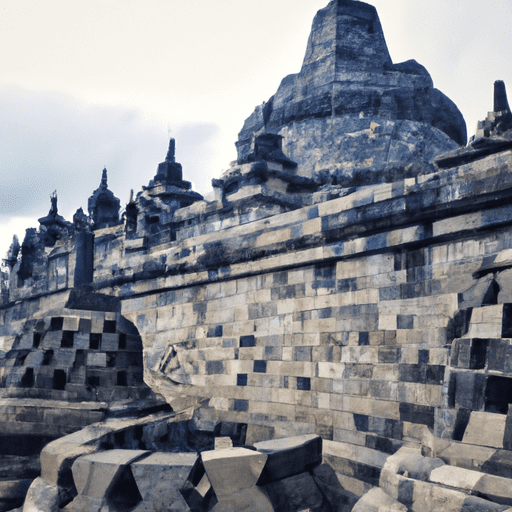Located in Magelang, Central Java, Indonesia, Borobudur temple is one of the most magnificent and grandiose Buddhist monuments that has stood the test of time. This temple is an exceptional masterpiece of architecture that boasts of stupendous stone carvings, intricate design, and a grandeur unparalleled to any other monument.
Borobudur temple was built between the 8th and 9th century during the reign of the Sailendra dynasty that ruled Java, Indonesia. The temple stands on a square base that measures 123 meters on each side and is adorned with 504 Buddha statues, an astounding 2,672 relief panels, and dome-shaped shrine. The shrine at the top of the temple, known as stupa, is circular and has a diameter of 16 meters.
The temple, as a whole, is divided into three levels which signify the different stages of Buddhist teachings. The first level is the kamadhatu, which signifies the world of desire. The second level is the rupadhatu, which symbolizes the world of forms. And the third level is the arupadhatu, which represents the world of formless beings.
The intricate and exquisite carvings and reliefs on the temple panels and walls depict various aspects of Buddhist history, teachings, and philosophy. The intricate carving on the temple walls showcases various Buddhist teachings which include Jataka tales, karmic law, and the law of cause and effect.
As one ascends the temple, the view of lush green fields and hills in the distance gradually spread out beneath. On reaching the top of the temple, one is rewarded with a panoramic view of the beautiful landscape, which is breathtakingly beautiful.
There is much to learn about the history and architecture of Borobudur temple, and the best way to absorb its magnificence would be to take a guided tour around the temple. Touring the temple can take about 1 to 2 hours; hence, there is a need for visitors to wear comfortable clothing.
In conclusion, Borobudur temple is a remarkable piece of art and architecture that harbors an incredible history of Buddhism. It is a temple that has stood the test of time and remains one of the most essential UNESCO World Heritage sites in Indonesia. It is, therefore, essential for visitors to take time to explore and learn about the temple’s rich history and architecture.

